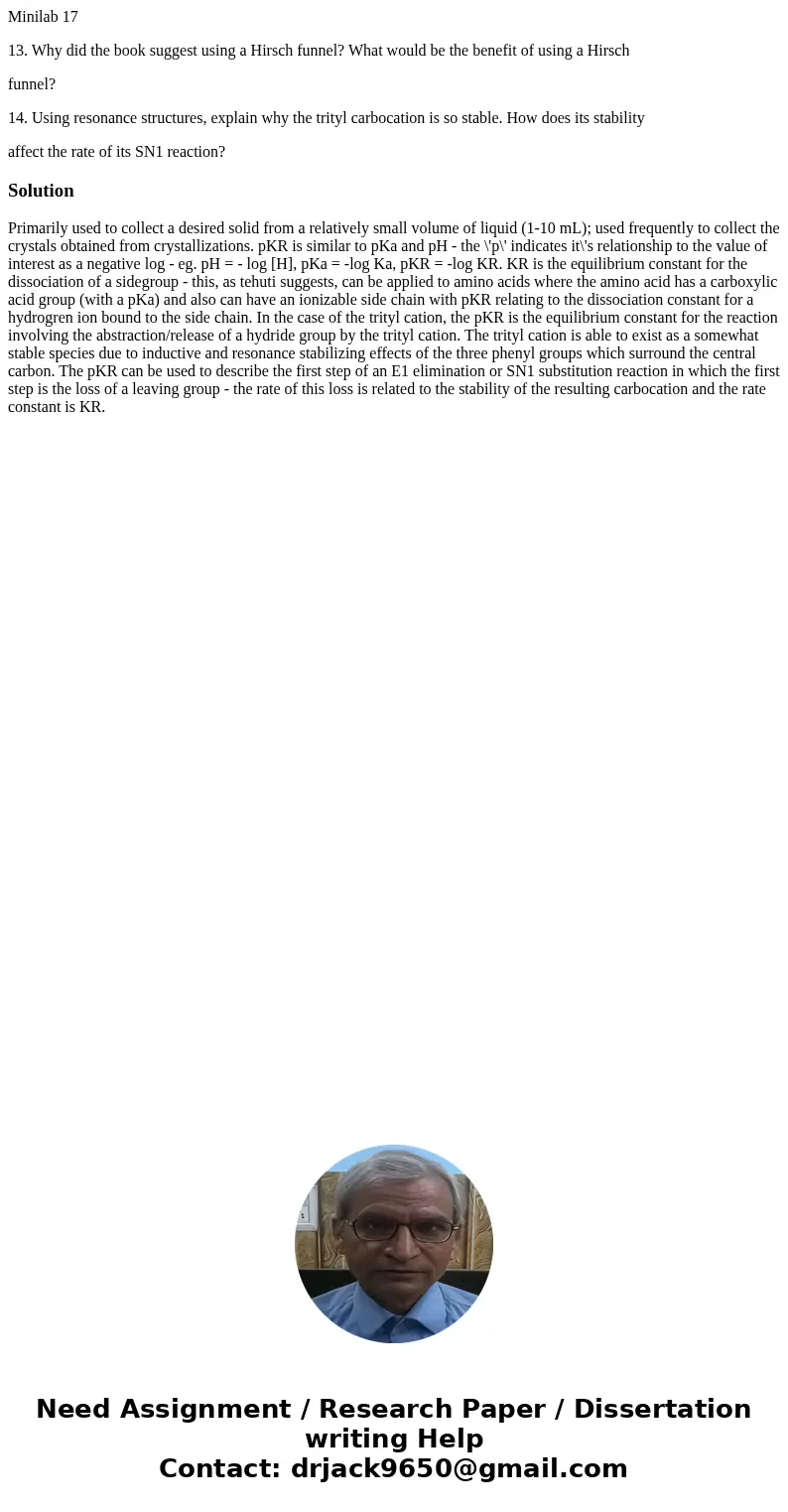Minilab 17 13 Why did the book suggest using a Hirsch funnel
Minilab 17
13. Why did the book suggest using a Hirsch funnel? What would be the benefit of using a Hirsch
funnel?
14. Using resonance structures, explain why the trityl carbocation is so stable. How does its stability
affect the rate of its SN1 reaction?
Solution
Primarily used to collect a desired solid from a relatively small volume of liquid (1-10 mL); used frequently to collect the crystals obtained from crystallizations. pKR is similar to pKa and pH - the \'p\' indicates it\'s relationship to the value of interest as a negative log - eg. pH = - log [H], pKa = -log Ka, pKR = -log KR. KR is the equilibrium constant for the dissociation of a sidegroup - this, as tehuti suggests, can be applied to amino acids where the amino acid has a carboxylic acid group (with a pKa) and also can have an ionizable side chain with pKR relating to the dissociation constant for a hydrogren ion bound to the side chain. In the case of the trityl cation, the pKR is the equilibrium constant for the reaction involving the abstraction/release of a hydride group by the trityl cation. The trityl cation is able to exist as a somewhat stable species due to inductive and resonance stabilizing effects of the three phenyl groups which surround the central carbon. The pKR can be used to describe the first step of an E1 elimination or SN1 substitution reaction in which the first step is the loss of a leaving group - the rate of this loss is related to the stability of the resulting carbocation and the rate constant is KR.
 Homework Sourse
Homework Sourse